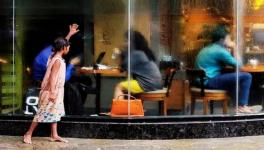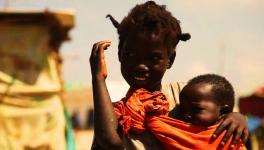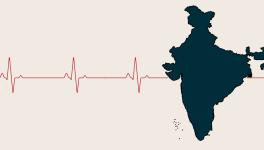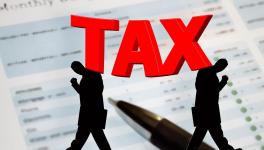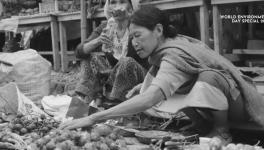Tale of two Indias: Income of Poorest 20% Tanks 53% in 5 years, Richest 20% Rises 39%
Representational use only.
In a K-shaped economic recovery since COVID-19 hit India, there was a massive plunge of 53% in the annual income of the poorest 20% of Indian households from 2015-16 to 2020-21. Besides the drastic fall in their annual income, which was rising since 1995, the share of the poorest 20% in the total household income dropped from 5.9% in that year to 3.3% in 2021.
The latest data, part of ICE360 Survey 2021, conducted by Mumbai-based non-profit organisation People’s Research on India’s Consumer Economy (PRICE), also show that the annual income of the richest 20% jumped by 39% in the same five-year period. Similarly, their share in the total household income rose from 50.2% in 1995 to 56.3% in 2021.
“The data reflects that the casual labourers, petty traders and household workers among others in Tier 1 and Tier 2 cities got hit most by the pandemic. During the survey, we also noticed that while in rural areas people in the lower-middle-income category (Q2) have moved to the middle-income category (Q3), in the urban areas the shift has been downwards from Q3 to Q2. In fact, the rise in the poverty level of urban poor has pulled down the household income of the entire category down,” said Rajesh Shukla, MD and CEO, PRICE.
The survey, which was conducted between April and October 2021 and covered 200,000 households in the first round and 42,000 households in the second round and spread over 120 towns and 800 villages across 100 districts, shows that the urban poor were most affected by the pandemic, drastically reducing their income.
Besides the poorest of Indians, the second-poorest category—
the lower-middle class—witnessed a decline in its income by 32% in the five-year period. On the other hand, the annual income of the upper-middle (20%) increased by 7%.
The data show the devastating effects of the pandemic on the poorest with their annual income, which never decreased since 1995. In fact, the household income of the poorest 20% surged by 183% at an average annual growth rate of 9.9% from 2005 to 2016 in contrast to a 34% rise in the income of the richest 20%.
The first wave and the ensuing lockdown impacted the urban poor among the poorest 20% of Indians more with job losses and the loss of income for the casual labourers, petty traders and household workers. The share of the poorest 20% in urban areas has shot up from around 10% in 2016 to 30% in 2021 as against the decrease in the number of poor living in rural areas from 90% to 70 per cent in the same period.
Calling for a K-shaped policy, Shukla said: “As the finance minister is finalising her Budget proposals for 2022-23 to give shape to the road map for economic revival of the country, we need a K-shaped policy too that addresses the two ends of the spectrum and a lot more thinking on how to build the bridge between the two.”
Rama Bijapurkar, founder, PRICE, who co-authored the survey said: “This couldn’t be more timely. Or else, we are back to a tale of two Indias, a narrative we thought we were rapidly getting rid of.”
The survey also shows how large corporate entities weathered the economic disruption, caused by the pandemic, at the cost of smaller ones with job losses more evident in small and medium enterprises in the casual labour segment.
Bijapurkar suggested “inspiring confidence through long-term policy stability and improving the ease of doing business” to help small businesses and individuals. “The elephant in the room is investment. Most big companies are doing well and don’t need more help, but we need to work the economy for the bottom half.”
Get the latest reports & analysis with people's perspective on Protests, movements & deep analytical videos, discussions of the current affairs in your Telegram app. Subscribe to NewsClick's Telegram channel & get Real-Time updates on stories, as they get published on our website.












